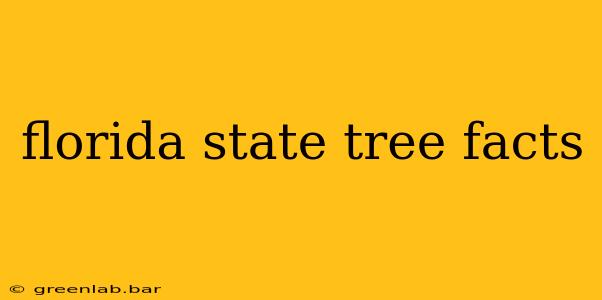Florida's landscape is as diverse and vibrant as its culture, and at its heart stands a symbol of resilience and beauty: the Sabal Palm (Sabal palmetto). Officially designated as the Florida state tree in 1953, this iconic plant holds a significant place in the state's history, ecology, and identity. Let's delve into the fascinating facts surrounding this remarkable tree.
A Deep Dive into the Sabal Palm's Characteristics
The Sabal Palm, also known as the cabbage palm, is a truly remarkable species. Its resilience to harsh weather conditions, including hurricanes and droughts, has cemented its position as a symbol of Florida's tenacious spirit. Here's a closer look at its defining features:
-
Appearance: The Sabal Palm is easily recognizable by its sturdy, single trunk that can reach heights of 50 feet or more. Its crown is composed of numerous large, fan-shaped leaves, creating a striking silhouette against the Florida sky. The leaves themselves can reach impressive lengths of up to six feet.
-
Lifespan: These aren't your fleeting flowering plants! Sabal Palms boast an incredibly long lifespan, often exceeding 100 years. Some specimens have even been documented to live for several centuries, silently witnessing Florida's transformation over time.
-
Hardiness: The palm's remarkable adaptability contributes to its widespread presence throughout the state. It thrives in a wide range of soil types and can tolerate both sun-drenched areas and partial shade, making it an incredibly versatile plant.
-
Ecological Importance: Sabal Palms provide vital habitats for numerous animal species. Birds utilize the palm's fronds for nesting, while various insects and other invertebrates find sustenance in its leaves and flowers. The palm's extensive root system also helps prevent soil erosion.
The Sabal Palm's Historical Significance
The Sabal Palm's deep roots extend far beyond the ecological realm; it's interwoven with Florida's history and culture.
-
Native American Uses: Long before Florida became a state, indigenous people utilized the Sabal Palm for a multitude of purposes. The heart of the palm (cabbage) served as a food source, while its leaves were used for thatching roofs, creating baskets, and crafting other essential tools.
-
Early Settlers: Early European settlers continued to rely on the Sabal Palm for building materials and various practical applications. Its durability and abundance made it an invaluable resource in the development of the state.
Why the Sabal Palm was Chosen as Florida's State Tree
The selection of the Sabal Palm as Florida's state tree wasn't arbitrary; it was a deliberate choice reflecting the palm's prominent role in the state's ecosystem and history. Its widespread distribution, resilience, and cultural significance made it a natural choice to represent Florida's unique character.
Conservation Efforts and the Future of the Sabal Palm
Despite its hardiness, the Sabal Palm, like many other species, faces potential threats, including habitat loss and the impact of climate change. Ongoing conservation efforts are crucial to ensure the long-term survival of this iconic tree and the vital role it plays in Florida's environment.
Conclusion: More Than Just a Tree
The Sabal Palm is more than just Florida's state tree; it’s a powerful symbol of the state's resilience, its history, and its natural beauty. Understanding its characteristics, historical importance, and ecological significance allows us to appreciate the profound connection between this remarkable tree and the vibrant landscape of Florida. Learning about and protecting this majestic palm is a commitment to preserving a vital part of Florida's heritage for future generations.

